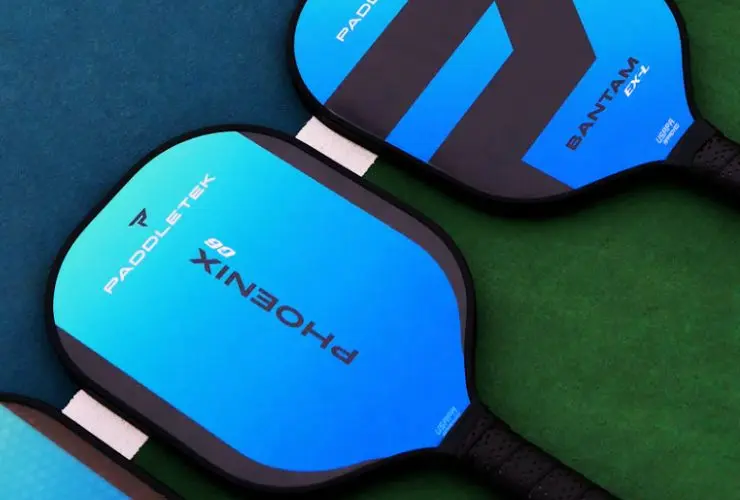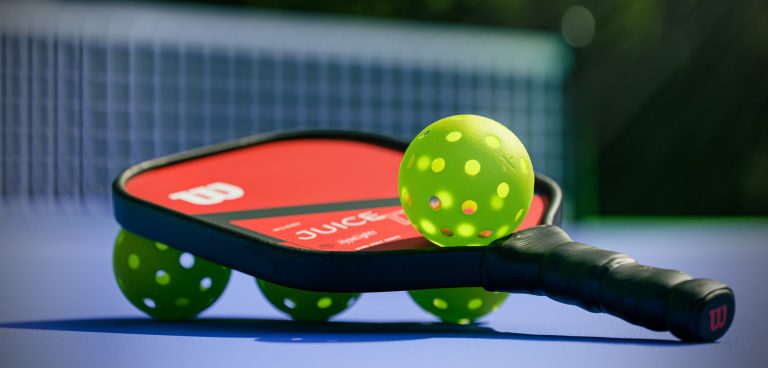Can a Pickleball Paddle Help with Tennis Elbow?
Tennis elbow is a painful condition that affects many athletes, especially those who engage in repetitive motions with their arms. Pickleball is a sport that has gained popularity in recent years, and many players wonder if using a pickleball paddle can help alleviate the symptoms of tennis elbow. In this article, we’ll take a closer look at tennis elbow and explore whether or not using a pickleball paddle can be beneficial.
Can a Pickleball Paddle Help with Tennis Elbow? Yes, a pickleball paddle can help with tennis elbow. Selecting the right paddle can significantly reduce strain on the elbow and alleviate symptoms of tennis elbow. Paddles with features such as lightweight construction, shock-absorbing materials, larger sweet spots, and comfortable grips can help minimize the impact on the elbow during gameplay.
Additionally, choosing a paddle with proper weight distribution and a balanced design can promote better technique and reduce the risk of excessive stress on the elbow joint. It is essential to consider these factors when choosing a pickleball paddle to help manage and prevent tennis elbow.

What is Tennis Elbow?
Tennis elbow, also known as lateral epicondylitis, is a condition that causes pain and inflammation in the tendons that attach to the outer part of the elbow. It is typically caused by repetitive motions that strain the tendons, such as those involved in playing tennis, golf, or other sports that require a lot of gripping and wrist movement.
Symptoms of tennis elbow include pain and tenderness on the outer part of the elbow, weakened grip strength, and stiffness in the elbow and wrist. The condition can make it difficult to perform everyday activities such as lifting objects or turning doorknobs.
Can Pickleball Paddles Help with Tennis Elbow?
While pickleball and tennis are similar in many ways, there are some key differences in the equipment used. Pickleball paddles are typically made of lighter materials and have a larger surface area than tennis rackets. This can make them easier to use for players who have experienced tennis elbow.
There is some evidence to suggest that using a pickleball paddle can be beneficial for those with tennis elbow. The larger surface area of the paddle allows for a more even distribution of force when hitting the ball, which can reduce the strain on the tendons in the elbow. Additionally, the lighter weight of the paddle can make it easier to swing without placing as much strain on the wrist and forearm muscles.
That being said, it’s important to note that every individual is different, and what works for one person may not work for another. If you have tennis elbow, it’s important to consult with a medical professional before trying to self-treat with a pickleball paddle or any other equipment.
Other Tips for Managing Tennis Elbow
While using a pickleball paddle may be helpful, there are other steps you can take to manage the symptoms of tennis elbow. Here are a few tips:
- Rest: One of the most important things you can do for tennis elbow is to rest and avoid activities that exacerbate the pain. This can help give your tendons time to heal.
- Ice and Heat: Applying ice or heat to the affected area can help reduce inflammation and alleviate pain. Try using ice for the first few days after experiencing pain, then switch to heat.
- Stretching and Strengthening: Certain exercises and stretches can help improve the strength and flexibility of the muscles and tendons in your forearm, which may help prevent further injury.
- Physical Therapy: If your tennis elbow is severe or persists despite home remedies, you may benefit from working with a physical therapist to develop an individualized treatment plan.
Conclusion
While using a pickleball paddle may be helpful for some individuals with tennis elbow, it’s important to approach any treatment with caution and consult with a medical professional. Additionally, there are other steps you can take to manage the symptoms of tennis elbow, such as rest, ice/heat therapy, and physical therapy. By taking a comprehensive approach to treatment, you can help alleviate pain and improve your overall quality of life.






